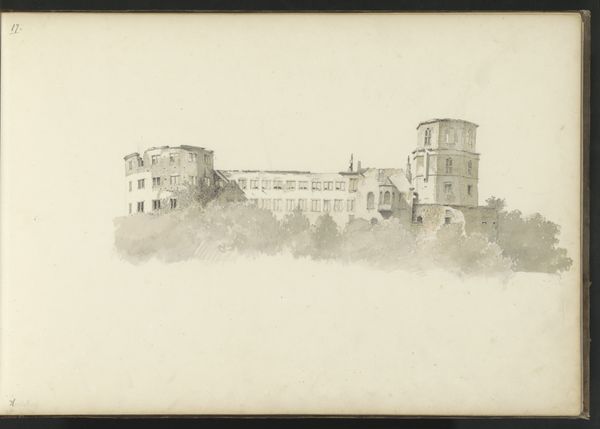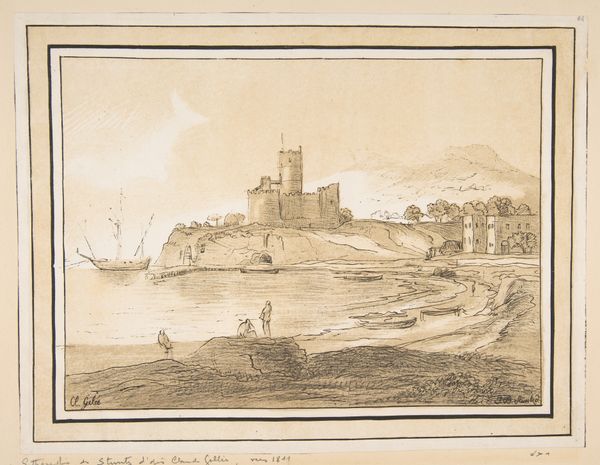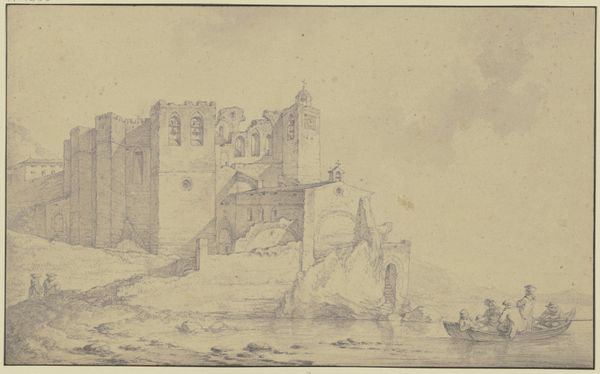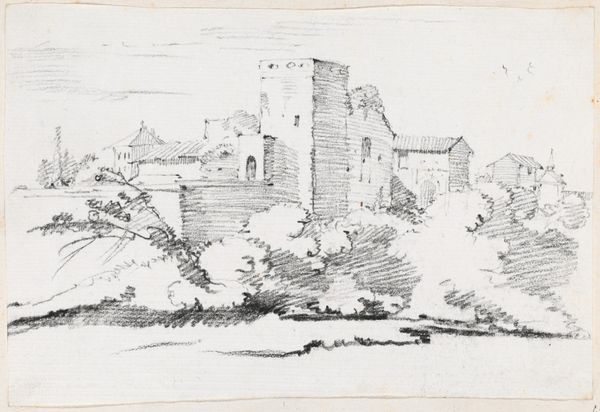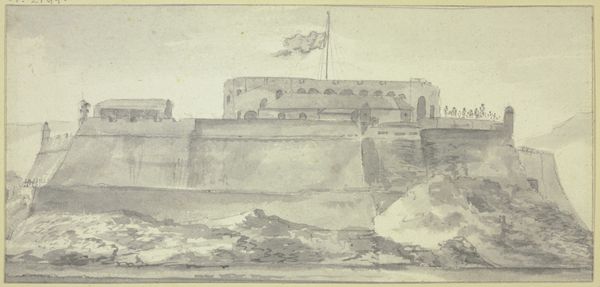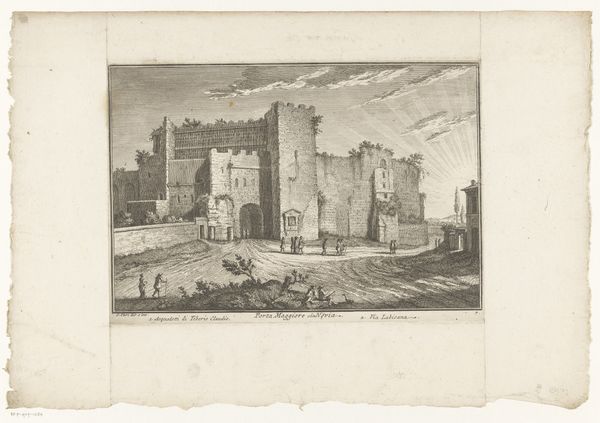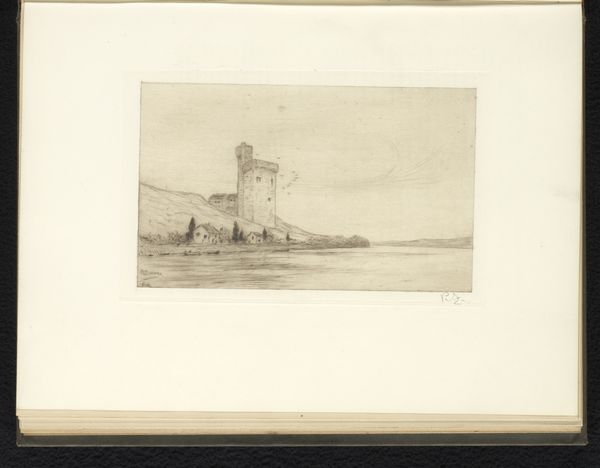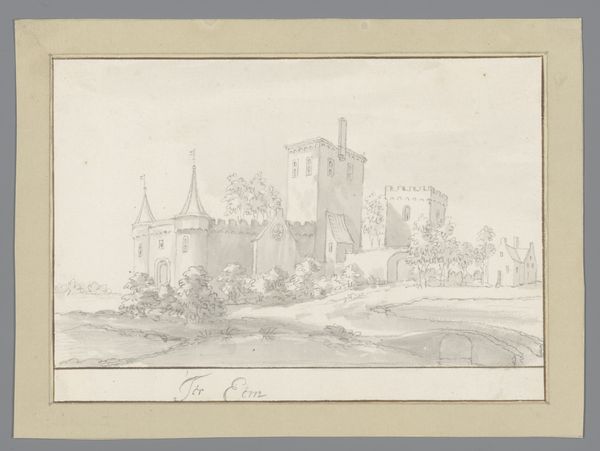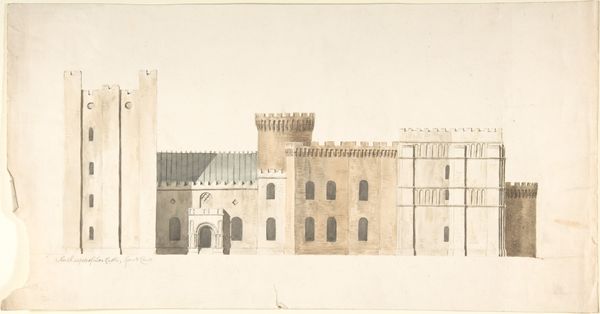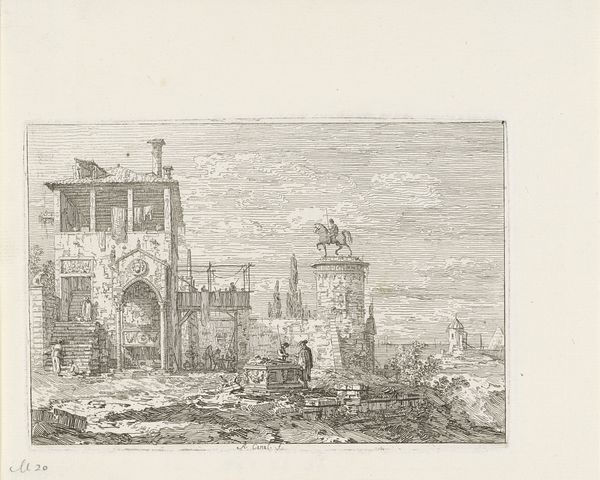
watercolor
#
neoclacissism
#
aged paper
#
natural tone
#
light earthy tone
#
light coloured
#
landscape
#
natural light
#
watercolor
#
natural colour palette
#
cityscape
#
history-painting
#
moderate light
#
natural palette
#
soft colour palette
#
watercolor
Dimensions: height 140 mm, width 200 mm
Copyright: Rijks Museum: Open Domain
Curator: Here we have "Klooster te Biseglia" or "Monastery at Biseglia" by Louis Ducros, dating to 1778. Ducros was a Swiss artist known for his landscape paintings, particularly those capturing the architecture and atmosphere of Italy in the late 18th century. Editor: It’s rendered in these soft, almost monochromatic washes, giving it an ethereal, faded quality. The composition is dominated by horizontal lines and geometric forms of the monastery itself, juxtaposed against the more organic shapes of the landscape. There’s a real stillness here. Curator: That stillness, I think, speaks to the Enlightenment's fascination with classical ideals, of which Neoclassicism in art was the main movement. Consider Ducros's choice of subject: a monastery, a symbol of order and contemplation, rendered with an almost documentary precision. Italy, particularly the ruins of Rome, became a pilgrimage site, of sorts. Editor: But the limited color palette contributes too. The restricted tones, the muted grays, create an almost dreamlike atmosphere. Observe how he employs the negative space. The paper is used as the brightest element of the work, and it creates depth without harsh contrasts. Curator: That softness could also point to the increasing importance of tourism and travelogues during this period. Works like these were often created as souvenirs for wealthy travelers on the Grand Tour. Ducros operated almost as a visual journalist, documenting the architectural marvels of the Italian landscape for an eager European audience. This wasn't objective reportage though, these landscapes were commodified. Editor: Indeed, but there's an artistry in selecting viewpoints, modulating light, and creating mood, despite the possible constraints of the market. The rendering of texture in the stone of the monastery and in the foliage is quite skilled, I think, especially considering the medium. Curator: And we cannot forget that this building has layers of history beyond the date of painting. Religious power struggles, the monastic lifestyle, maybe even the economics of land ownership. Art is never made in a vacuum. It's a part of ongoing stories and influences. Editor: A very persuasive and important point! It just highlights the nuances within an artwork that resonate across contexts. Thanks to history, the cultural framework in the artwork seems rich. Curator: Thank you for illuminating the artistic structure. What a joy to view an image with different lenses!
Comments
No comments
Be the first to comment and join the conversation on the ultimate creative platform.

